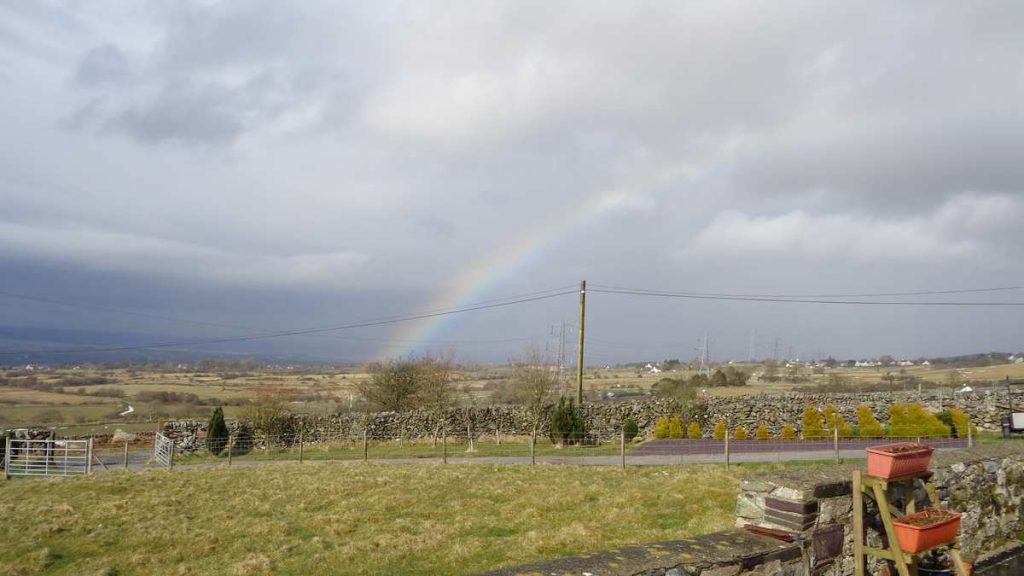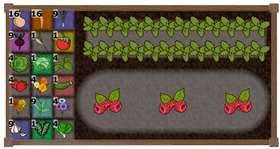What an awful month February has been in Britain. Talk about February Fill Dyke! The rain has hardly seemed to stop and the storms and gales have just seemed to keep on coming with hardly a break. What’s to be done?
All this rain and excess water can be pretty damaging to the soil, particularly bare soil. There’s nothing to be done whilst the soil is sodden but once it starts drying out, check the condition.
If you’ve patches with puddles, just putting a fork in every six inches and rocking it may be enough to break up compaction and pans, helping the water to drain. This works on lawns too, by the way.
Don’t forget, all this rain has washed out a lot of nutrients from the soil. A couple of ounces (a good hand full) of blood, fish and bone or Growmore fertiliser per square yard will help no end before planting or sowing. So often the problems people have with vegetables are simply down to those vegetables being malnourished.
More to come?
It seems likely we’re going to see more years like this with super heavy rain events and so you may want to think about long-term solutions if your plot is like a paddy field. To be clear, I’m not talking about deep floods. For information on vegetable growing after a flood, see here: Safe Crop Growing after a Flood
Often poor drainage is the cause of a wet plot. Perhaps a solid pan has developed under the soil below the depth normally cultivated. Double digging or even treble digging to break through the pan may solve the problem. It’s a big job but not one that needs to be done every year. Once the pan is broken up the waters can just drain away.
Puddles on the Lawn
Lawns often become compacted, especially those on clay soils. If the water can’t drain it can literally drown the grass, allowing weeds to take over. Putting in land drains and soakaways will solve the problem. Hollow tine forking and brushing in sharp sand is effective as well but there may be an easier, natural solution.
Start by deep forking and rocking to open the soil. Allow the grass to grow long until it starts to flower and seed, then mow. As grass gets larger above ground, the roots get larger below. Once cut, those roots die back and become organic matter. This will increase the soil health and opens it up to allow more water to drain and store. Repeat the process as often as you can and in a year you should see a big difference.
This won’t create a bowling green lawn for you but it should stop a muddy mess in the winter.
Add Organic Matter – Composts & Manures
Adding organic matter to the soil helps flood resilience. The more organic matter the soil contains, the better it handles super rainfalls. The organic matter holds the pores and tiny channels in the soil open and acts like a sponge, absorbing and holding water for a drought.
Another benefit is that the organic matter feeds worms who micro-cultivate the soil. They create more channels for water to drain down.
The deeper your organic matter rich top-soil is, the more water it can hold. It may be ‘old-fashioned’ to some, but deep digging does work. As you dig down, there’s a point where you will see a change in colour. Often from a dark, near-black colour to a light brown. Breaking up this layer and adding a layer of organic matter will encourage those worms down to mix and break up the sub-soil.
High Water Tables
Sometimes improving the soil or installing drains won’t help. If the water table is high then water will come in faster than you can drain it away. Don’t forget, in Britain the water table varies with the season. In winter it’s usually higher than summer.
The only practical solution I’ve found for a high winter water table is to build deep raised beds. In effect, lifting the plantings above the waterline.





Excellent passage on Coping with Rain.
Some very helpful advice.
I now have a better idea on what to do to minimise the effect of rain on my rear lawned area.
I volunteer at a Garden that had several feet of brackish water on it for several days after floods a few years back. The Head Gardener says the worst problem was compaction.
A very constructive approach to a problem that is becoming more of a norm rather than an exception.
Thanks John
Here in the United States in TN since 1/1/2020 to 3/3/2020 we’ve had 27.45 inches of rain…69.72cm. Last year was record setting wet and this year is shaping up to be the same. From 3/10/2019 to 3/3/2020 we’ve had 99.38 inches of rain 252.43 cm. Everything is mud here on my homestead – the chicken run 10ftx30ft has lakes and the space between the chicken run and the raised garden beds actually has eroded a trench from the run off rain. And, like last summer we’ll probably have a 3 month drought going into Fall. It’s sure challenging. When you combine that much rain with warm spring temperatures we end up with multiple generations of insects along with nonstop powdery mildew and fungi… So my area is right in there with yours!
with saturated ground i find that breaking the soil surface with either digging or hoeing allows the soil to breath and for the air to penetrate. It also controls weeds and the ground is in good condition allowing planting to take place immediately
Thank you for that advice I hadn’t thought about the effect the rain would have on my plot other than preventing me from working!
We have lots of clay under our “top” soil. And that, in addition to the compaction. 35 years of use, made lots of huge swimming pools in our yard as Maine had more rain than snow this year . Unfortunately we only have chickens and no ducks to enjoy the area. : ) These ideas are very helpful. We may rototill down deep this year on that area and put compost on it and wait and see. It’s too big an are for us 70 year olds to fork. : D
Thanks so much.
blessings. Loy
The advice about dealing with rain is sound advice, my plot floods all the time throughout all seasons, so I raised the beds and dug out troughs so the rain would flow to the front,[ system works just like a gutter] it is not ideal as the water does back up, but after a day or two it drains naturally. Really it all depends on the subsoil and in my garden it is clay, and it is hard labour working with it, however its much better since I raised the beds. I use six in one fertiliser and horse manure and fork it in and in none growing seasons cover all beds with black plastic to keep the heat in. Where I live in the north of England the only plants that are set away are in Polytunnels its just too cold and wet to plant anything in open ground at this time of year.
I really appreciate this advice for grassed areas and the veg beds. I’ve been really downhearted about trudging over soggy grass to get to the veg beds and to the compost bins, which themselves are pretty soggy! Being near the coast in south west Wales if it’s sunny it’s wonderful but otherwise gardening can be really challenging!